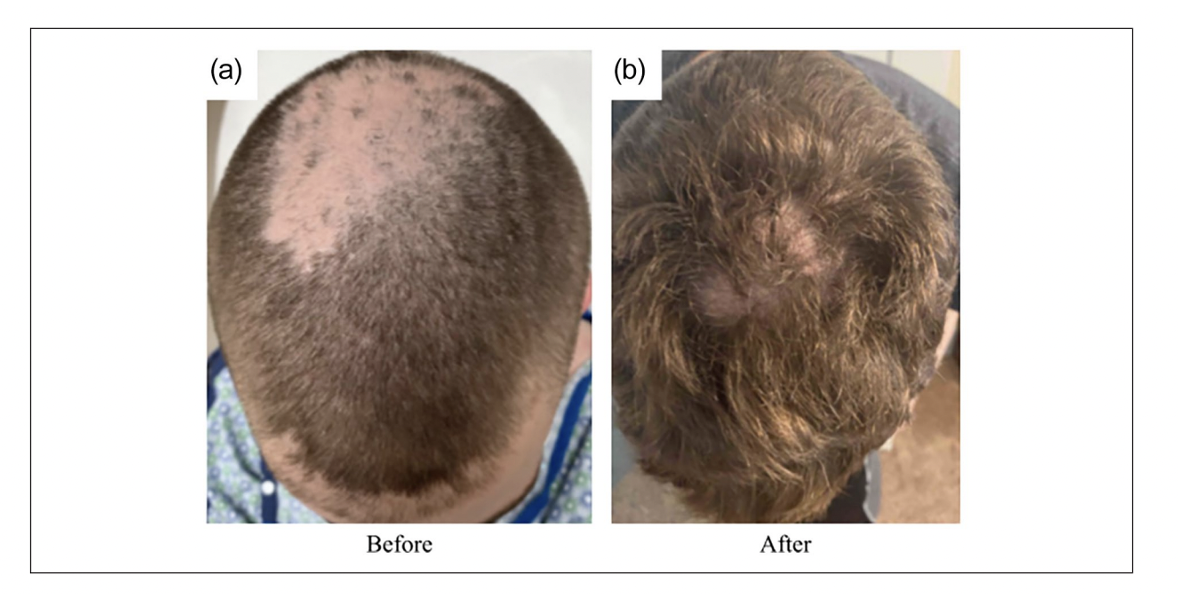N - acetylcysteine (NAC) in Trichotillomania:
N-acetyl Remains an Option for Adults with Trichotillomania
Trichotillomania is a hair pulling disorder. I have reviewed the DSM Criteria have been reviewed in the past.
Current evidence suggests that habit reversal training may be among the most consistently effects treatments for helping patients with trichotillomania. Pharmacologic agents with N-acetyl cysteine, chlomipramine and olanzapine may be helpful based on trials to date.
NAC is a good option for many practitioners to consider for adults patients given its good safety. Nause and GI upset can occur but are not common. Behavioural therapy and treatment of associated psychiatric and psychological issues should not be ignored.
N -acetyl cysteine in Children with TTM: Does it help?
Studies have shown that N -acetyl cysteine can be a helpful strategy for some adults patients with trichotillomania. Unlike the data in adults, data in children and adolescents have not suggested a clear benefit.
Bloch et al. 2013
Bloch and colleagues from Yale set out to examine the efficacy of N-acetylcysteine (NAC) for the treatment of pediatric trichotillomania (TTM) in a double-blind, placebo-controlled, add-on study. There were 39 children and adolescents aged 8 to 17 years with pediatric trichotillomania were randomly assigned to receive NAC or matching placebo for 12 weeks. The primary outcome of the study was a change in severity of hairpulling as measured by the Massachusetts General Hospital-Hairpulling Scale (MGH-HPS). Secondary measures assessed hairpulling severity, automatic versus focused pulling, clinician-rated improvement, and comorbid anxiety and depression.
Interestingly, there were no significant difference between N-acetylcysteine and placebo was found on any of the primary or in any of the secondary outcome measures. Many subjects significantly improved with time regardless of treatment assignment. In the NAC group, 25% of subjects were judged as treatment responders, compared to 21% in the placebo group.
Overall the authors felt that, unlike in adults, there was no clear for NAC for the treatment of children with trichotillomania.
Popova L and Mancuso J 2022
Popova and Mancuso present a report of a 17 year old male patient who had a nice response to NAC.
The patient described in the report was a 17-year-old male presented to clinic with a history of recurrent hair twirling and persistent hair loss. His hair was recently shaved in an effort to stop twisting his hair and he had a large area of alopecia with irregular borders. When he presented to clinic, he was about to finish 3 months of CBT. CBT had helped his underlying depression and anxiety but not made an impact on hair rubbign and touching and twisting the hair.
The authors point out that the patient’s habit of rubbing at his head and touching his hair persisted, even after shaving his hair short twice. CBT had not helped the trichoteiromania (desire to rub the scalp).
The authors started a a dose of 600mg twice daily, increasing to 1200mg twice daily as tolerated. After 6 months, our patient reported decreased desire to twirl his hair and his hair had almost completely regrown
Improvement in hair density in a 17 year old male patient using N-acetyl cysteine for trichotillomania and trichoteiromania. SOURCE: Popova L and Mancuso J. Dramatic Improvement of Trichotillomania with 6 Months of Treatment With N-Acetylcysteine. Glob Pediatr Health. 2022 Mar 14; Used with creative commons license.
Comment and Discussion
This is a nice report of NAC helping trichotillomania and trichoteiromania. It would be nice to have trichoteiromania in the title of the report or the abstract so it can be indexed in the future for authors wishing to study the specifics of trichotillomania and trichoteiromania.
The study is valuable given the use of CBT and NAC in this study. This male patient had an improvement in his depression and anxiety with CBT but it was interesting that this therapy did not sufficiently help the hair pulling.
More studies of NAC in teenagers are needed. The initial well done randomized controlled trial from Bloch and colleagues back in 2013 would lead us to believe that NAC is not a great option for children and adolescents with TTM. more studies in teenagers, especially those 15-17, will help better define if results in this age group are more similar to the results achieved in adults
REFERENCE
Popova L and Mancuso J. Dramatic Improvement of Trichotillomania with 6 Months of Treatment With N-Acetylcysteine. Glob Pediatr Health. 2022 Mar 14;9:2333794X221086576.
Farhat LC et al. Pharmacological and behavioral treatment for trichotillomania: An updated systematic review with meta-analysis. Depress Anxiety. 2020 Aug;37(8):715-727.
Bloch MH et al. N-Acetylcysteine in the treatment of pediatric trichotillomania: a randomized, double-blind, placebo-controlled add-on trial. J Am Acad Child Adolesc Psychiatry. 2013 Mar;52(3):231-40.
This article was written by Dr. Jeff Donovan, a Canadian and US board certified dermatologist specializing exclusively in hair loss.

